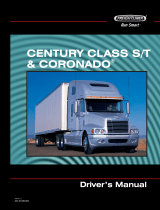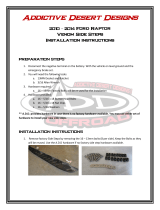
73
Your automatic transmission has a shift
lock system to minimize the possibility of
incorrect operation. This means you can
only shift out of “P” position when the
brake pedal is depressed (with the ignition
switch in “ON” position and the selector le-
ver pulled toward you).
(a) Normal Driving
1. Start the engine as instructed in “How
to start the engine” in Part 3. The trans-
mission must be in “P” or “N”.
2. With your foot holding down the brake
pedal, shift the selector lever to “D”.
In “D” position, the automatic transmis-
sion system will select the most suitable
gear for running conditions such as nor-
mal cruising, hill climbing, hard towing,
etc.
Always turn the overdrive switch on for
better fuel economy and quieter driving. If
the engine coolant temperature is low, the
transmission will not shift into overdrive
gear even with the overdrive switch on.
Never put your foot on the accelera-
tor pedal while shifting.
CAUTION
!
3. Release the parking brake and brake
pedal. Depress the accelerator pedal
slowly for smooth starting.
(b)Using engine braking
To use engine braking, you can downshift
the transmission as follows:
Turn off the overdrive switch. The “O/D
OFF” indicator light will come on and
the transmission will downshift to the
third gear.
Shift into the “2” position). The trans-
mission will downshift to the second
gear when the vehicle speed drops
down to or lower than the following
speed, and more powerful engine
braking will be obtained.
3RZ-FE engine 112 km/h (69 mph). .
5VZ-FE engine 119 km/h (73 mph). .
Shift into the “L” position. The trans-
mission will downshift to the first gear.
When the vehicle speed drops down to
or lower than the following speed, and
maximum engine braking will be ap-
plied.
3RZ-FE engine 54 km/h (33 mph). . .
5VZ-FE engine 58 km/h (36 mph). . .
Vehicles with cruise control—When the
cruise control is being used, even if you
downshift the transmission by turning off
the overdrive switch, engine braking is not
applied because the cruise control is not
cancelled.
For ways to decrease the vehicle speed,
see “Cruise control” in this chapter.
Be careful when downshifting on a
slippery surface. Abrupt shifting
could cause the vehicle to spin or
skid.
CAUTION
!
(c) Using the “2” and “L” positions
The “2” and “L” positions are used for
strong engine braking as described pre-
viously.
With the selector lever in “2” or “L”, you
can start the vehicle in motion as with the
lever in “D”.
With the selector lever in “2”, the vehicle
will start in the first gear and automatically
shift to the second gear.
With the selector lever in “L”, the trans-
mission is engaged in the first gear.





















